Without further delay, let’s start with the Rob Nokes special. Here is an interview I had with him, talking about the general aspects of his career, his techniques and tools, his company, and more.
Designing Sound: First off, tell us how you started your career in sound and how you got to where you are today?
Rob Nokes: My career started in 1987 in my hometown, Winnipeg, Canada. Just before I turned 17 I got a job as a cameraman and TV Switcher for the local racetrack network. Following a couple of years of doing that, I went to a school called OIART on a whim and by 1990 I was in Toronto working at a studio called Masters Workshop. I also had a brief stint at a company called ISTS in which we set up infrared translation systems for business meetings and what not. Working there I found that, even though I was doing well financially, I didn’t find it interesting and had no passion for that business, so I took the job at Masters Workshop from a guy named Jim Frank. I immediately fell in love with being in the studio and spent many nights and long hours working. I was a 20 year old kid learning from really good engineers like Mark Wright and many others who worked there.
One day I was assisting in an ADR session for a guy named Rick Ellis and they were doing the movie “Scanners 2” where heads were blowing up and exploding, I thought the sound effects were really cool. So I went over to the SFX editor (Dan Sexton) and he had all these synthesizers and equipments and I watched him create sounds, I found it to be fascinating. This discovery came at the right time, since I originally had the idea to be a music producer, but the music I was doing was more like SFX than actual ambient surround type of music for films. So SFX fulfilled my artistic needs and at the same time turned into a career for which I’m thankful.
Later on, my interest in SFX was solidified while working for IMAX. At Masters Workshop, while working as an ADR assistant, I was given the task that required me to modify a computer set up that a superior had created, in order to fulfill the functions and needs of the ADR department. At that time (1990) not many people knew much about computers. Fortunately, I had enough of the knowledge to work on the computer, but I also had enough fear of that superior in the company not to mess with his set up. My approach was to repeatedly ask him to work with me to fulfill the functions that were necessary…and at the end of my show, he ended up having me terminated. Jim Frank was really kind and said “this is the best thing that ever happened to you, even if u can’t see it now”. He felt my enthusiasm and energy would be better served elsewhere but for me it didn’t seem like he was right at the time.
Sure enough he was right, and a couple of weeks later I was working for a gentleman by the name of Peter Thillaye, who is well known in Canada for making lots of the IMAX movies. Working with Peter was very exciting for me. For the movie “Green Contract” we went out an hour and a half east of Toronto and we’re in the wilderness emulating gorilla’s SFX. I also logged all the DATS for “Green Contract” for him. They were recordings from Guatemala, Costa Rica, the Amazon River, lots of recordings of the rainforest which were incredible to hear. So working for Peter was very inspiring. I worked for him for 4 or 5 movies and then I started getting job after job and would have 4 or 5 offers at the time.
Later on, I was working for Greg King for Sounddogs Toronto and we had a really good sense of team and purpose, functions and goals. We had a lot of drive that propelled us to a lot of success. At the time we were very young and the over enthusiasm sometimes got in the way. Then we moved to LA, at the age of 25, and by that time we had done pretty well for ourselves in our careers.
DS: Did you have a mentor early in your career? Or maybe something that helped you a lot when you were starting out?
RN: I’ve had the privilege to meet great people who have inspired and encouraged me in the early days. One of these people is Joe Cirillo, a guy I worked for at Winnipeg racetrack’s TV station. He was really talented and smart and encouraged me to work with the cameras and even loaned me the studio to shoot a music video when I was 17. That was a great experience, I got to use a lot of material that many 17 year old kids did not have access to at the time.
At Masters Workshop, all the engineers were great: Mark Wright, Steve Foster, Rick Ellis, Tim Archer, Jim Frank, Yuri Gorbachow, Dan Sexton among others. I found that because I wanted to help out so much and do so much, lots of the guys there took me under their wing and took their time to teach me and show me things. If I had been less involved, then people maybe would not have taken the time. Working like that was really a great experience because certainly some people gave more than they had to.
John Hazen was another mentor I had. At the time he was more of a technical guy than an artistic guy, he had a really good handle on technology which in 1990 was quite rare. John also had microphones and would loan them to me so I could go out and record, he had lots of good advice, a great guy.
Also Peter Thillaye, who I mentioned before, was one of the best sound effects influences I’ve had. He was a “come as you are” type of guy, wearing a t-shirt and jeans and crazy hair, for him it was about the work not the looks, which is something I’ve always agreed with.Then at Sounddogs, Greg King was certainly a mentor and a leader. What really made him stand out as a good mentor is that he comes from a background of sports coaching, with lots of drive and hard work. Looking back on it, his influence changed me from being loose to be definitely more focused and detail oriented. When Greg and I came down to California in 1995 we had a partner named Bob Grieve, he was really instrumental and showed me how to be a diplomat, understand people, listen to their needs and adjust my expectations. Bob had a softer touch with people so I tried to adapt and learn. Those were the people who made the biggest impact in the early days of my career.
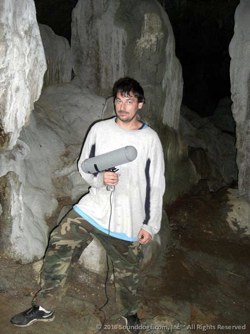
DS: What do you love about being a sound designer/effects recordist?
RN: This is hard to answer for me, it’s like trying to answer why I love horses so much for example. I love horses because of the way they make me feel, when I’m around them, I feel at peace and happy.
Sound recording is like a treasure hunt. It’s like a magic moment when you recognize that a sound is unique and good. And then you have to take that sound from 70% to 100% quality. You know, part of what we do is we have to recognize that a sound is good, that it’s emotional and then using technique or performance we take it to the next level, so that when the viewer hears it they’re also experiencing that emotion.
So I guess I just love the thrill to find that magic in a bottle.
Working for sound supervisors and sound designers is very rewarding, when they tell me the sounds we provide are great and how much we’ve helped them. I believe this relates a lot to me growing up playing hockey and being a selfless team player, I do get a lot of satisfaction helping other people in the form of a team or teamwork. I get a lot of satisfaction when others succeed, and part of their success is because we did a good job.
This is why I love what I do, it’s the best way I can transmit it to you.
DS: From Production sound, editorial, and a ton of sfx recording, you’ve kept your work diverse; What is your favorite area of work and why?
RN: My favorite kind of work…there’s no real favorite per se, what I like doing is being challenged with different tasks and different situations and having a broad range of knowledge and skills. My personality does not lend itself to doing just one thing, so for me to be recording ADR, loop group as either a sound supervisor or engineer, working with actors or getting the best performance for the producers, being on a dub stage working with editors and mixers and executive producers, achieving what their goals as quickly and efficiently as possible for the studio, or recording a great set of sounds for a supervisor for a movie…these are all really fun things to do.
If I’m supervising a movie I can sit there and edit 12 hours a day and focus on getting something exactly the way I want it. Like on “Miracle”, I went out of my way to get exactly what I wanted with the details and accuracy of the skating, pucks and sticks so no one would ever watch the movie and go “oh that’s not there” or “it’s out of sync”. This happens with talkie movies: the accuracy is just not there, the details are not perfect.
I also enjoy setting up a good work flow and communication so we focus more on getting the job done and less on technical problems that may arise in production. I love it all, I mean, it’s a great job and career, I’m very fortunate and grateful. I just like being able to do everything and strive to do a good job at it all.
DS: What are your favorite kind of sounds to record and design?
RN: Would be anything that is unique, original, rare or fantastically great. What I mean is that there are a thousand toilet flushes, there has to be at least 20 thousand door recordings, there’s a lot of generic traffics and so on. So what I look to record is material that has not been recorded, or is not well recorded or there’s just not enough of it out there. At some point, about 6 years ago, I found that recording water or wind, unless you’re really doing it differently or you’ve found a location that is extraordinary, is not worth it since there’s a library that already has these sounds. Artistically, I’m trying to push myself to find unique new sounds. I’m not a studio (like a foley studio type of recordist) because it doesn’t motivate me artistically, it doesn’t move me. What does excite me are unique sounds, trying to find a cave path in the lava tunnels in the Island of Mangaia in The Cook Islands (LINK) to record the sound of water crushing on the coral reef below ground. That’s good, I wonder how many people have heard that sound before.
Also sounds of history are very interesting to me, if there’s a historical meaningful location or place then that sound has added meaning. For example, I was a the Terezin concentration camp and we went into a room that was about maybe 4 by 8, in which they would hold 50 people at the same time. The door in this small chamber, this is the door that those people heard in World War II. The sound of that door, the echo in the room, to me that’s historical sound. This might be just another good sounding door, but there’s more to it, this is the door that people in this concentration camp heard for years and for some, this was probably the last door they ever heard. This sound provoked fear and hope, it’s charged with emotions, it has meaning. These are the type of sounds I’m after.
DS: How do you adapt to accidents when in the field? Have there been any bad recording situations that yielded awesome sounds?
RN: Let’s see…I do remember being at Isla de Lobos in Uruguay, an island that is the habitat of thousands of sea lions. I was recording on the single males only beach and I got too close to this angry male sea lion who was about 200 Lbs., he proceeded to chase me as I squealed like a little girl running away from him. As you can imagine I was the laughing stock of those who got to watch the whole thing.
There have been situations like when we were recording cars for “Fast and the Furious” at California City, where I feared for my life, really. We were recording fast pass bys and the guy driving the car was not a professional. At some point in the shoot he was drifting a corner and pointed directly at me and I didn’t know him, and I said to myself well…I’m not going to find out whether he will be able to control de car or not, this car is coming right at me…so I just ran away because I thought he was going to hit me. I can shoot the sound again but I don’t have nine lives.
I usually work with people that I trust and professionals, it’s important to be careful and stress safety when you work with people.
On Santa Clause we had a strange occurrence. We wanted to record kites for the sled whoosh-by’s so Greg, Darren King and I went out to Lancaster and we found this place and started recording kites. It was midnight and between takes I tell the guys “do u see that light in the distance that’s coming towards us?” they said it was just some farmhouse or something. Then 5 minutes later, the same thing, I ask them if they see the light approaching and they say no and then 10 minutes after, the same thing until they go “oh, it is coming at us!”.
It turned out we had wandered onto Edward’s Air Force base, and they have a lot of secret stuff up there. The light was MP’s closing on us because we had trespassed. So there we were, three canadians trespassing on Edward’s Air Force base, flying kites in the middle of the night. They escorted us all the way to back the 14th freeway…we thought they were going to lock us up.
In Kazakhstan I had a funny/embarrassing experience. I was there with a group of locals and some camels. Suddenly, I hear the men laughing and this incredibly awesome sounds coming from the camels. I walk around to see what’s happening and there they are, these two camels having sex. Now I get really happy because they are making these incredible vocal sounds, I could see those sounds being used for monsters on a film, it was perfect. So I get my recorder and start recording and after a while I realize the joy of these sounds made me forget to put the recorder on “record”…so I only got a bit of the sounds.
DS: Where do you typically find inspiration? Is there any special method you have for making creative decisions?
RN: It depends, there are two types of recordings. There’s the recording where I have a specific thing I have to record and what I do is locate the best sound for what’s needed and the best environment and then perform at the best. This is typically when I get hired for a movie.
The second type is what I call basically just wandering around, living by fate and look for a place or a location that has potential to have a unique material whether is an abandoned factory, caves or mines. I just try to think of things that I haven’t heard or haven’t experienced and go to those locations. I also ask locals, wherever I am, “is there a place like this or like that” and you have to be open to experiencing it and quickly decide whether a place has potential or not to be a great sound. On “Real Steel” we did lots of recordings in Uruguay, South America. We were looking for an abandoned saw mill that was about 110 years old and we took a wrong turn and came across this steel truck bed that had no wheels and was put on wood planks and immediately I’m thinking that this could produce some good steel sounds. We did stomps, hits and pounds and everything we dropped on it would resonate with the incredible steel sound. Those are the kind of things you have to be open and aware of when you see them.
After recording the truck bed we went over to the saw mill and it was really secondary and nowhere near as interesting. It was basically stone and the reverb wasn’t good. If I’m in an environment that has really interesting reverb that’s exciting, like the churches in Czech Republic, they had incredible reverb. Or the Nidaros cathedral in Trondheim Norway, it also had excellent reverb.
When you travel in search for SFX, you kind of just have to walk around and talk to people. In Vientam we found an old traditional rice mill from hundreds of years ago in Sapa. We came across it by chance, we were hiking the mountains in search for good nature recordings and then bam! this gem of sound is right there waiting for us.
Unless you put yourself out there to take the time to experience the world you’re never going to really find great sounds. It’s important to get out there and wander around and look. They are everywhere, you need to leave your everyday environment and experience new things.
Another thing I do in my local area, I find an everyday item that I consider makes a good sound, I set it aside until I have a studio day and record it specially, kind of like a props collection. After I’m done recording the good sounds of it I get rid of it.
DS: What goes into casting locations or props to record in the field?
RN: I think the number one thing is recording the right sounds. Finding the source is important. You can do that by asking people who specialize in that source, for example, if you’re recording a machine, ask the operator. If you’re recording animals, ask the keeper or owner what makes the animal make sounds.
Use descriptive words to express what you want to get. Another example would be someone that’s been working at a windmill farm will be able to point you “this windmill, when the wind hits from the south west, it makes this crazy sound”.
So ask a lot of questions and talk to experts and ask which parts of the place, object or animal is going to make the best sound. Wherever you are, ask the people that know the environment and they know what sounds best under what circumstances.The other thing is location, if you can move a good source to a quiet location that’s great. An ideal location has very few airplanes or traffic, few insects or birds. Finding a good location will save you hours or days of cleaning up sounds on editing. When you find that good place to record, it’s really important to know its patterns: know when the wind is at it’s lowest, what time there’s less traffic, when are the birds quiet or what time of the day or season has less insects.
DS: Why did you decide to start Sounddogs.com and how has is evolved along with the film sound industry?
RN: The original Sounddogs company was created in Toronto by Greg King and Nelson Ferrera, as an editorial company. In ’95 Greg and I moved down to LA and we partnered with Bob Grieve, and we formed Sounddogs USA. So there’s Sounddogs Canada and Los Angeles, and about 8 years later Steven Barden and Craig Hennigan formed Sounddogs New York. Those were the editorial companies.
Now, Sounddogs.com was a different entity. We were in LA in ’95 and we were surrounded by these giant companies such as Skywalker, Soundelux, SoundStorm. So the idea for Sounddogs.com originally, was to be a calling card for picture editors. We had great sounds, we recorded all our sounds, we had no CD’s, mostly our own sounds. It started as a marketing angle and what we had hoped was over time, it would become a profit center as a publisher.
We started creating our library on magneto optical discs in 1990. In 1996 Greg, Nelson and I conceived this plan where we would nurture this internet company and start publishing our own sounds on it. We released it in may 1997. Back then the web was tiny compared to what it is now, we had a lot of people still using modems back then. I remember our first tower was a Raid 5 and i think it was 4.5 GB or 9 GB and it costed like $5,000, expensive. So Sounddogs.com got notoriety, we provide a lot of sounds for a lot of important movies, a lot of picture editors made good introductions because it was something the picture department needed…to get sounds right away, specific to their movies.
The first 5 years of the company were very difficult, sales were small and expenses high. The work was hard, we had to run the company and run servers, do marketing, all while spending nights in the server room fixing things.
After we did “The Insider” and the movie got an Academy Award nomination for best sound, my partners started to see the company was a drain over the successful editorial company and they had a point. So in 2001 we parted ways amicably and they moved on with Sounddogs LA and I moved on with Sounddogs.com. I knew the results were going to be there, because I knew how happy our customers were.
Things got better, i got to travel the world, record sounds and meet people. I was once in Iceland and I met these people that were saying how great Sounddogs.com was and they had no idea that I had co-founded the company. Same thing happened in Thailand, I remember meeting someone who loved Sounddogs.com and this was back in 2001. So, without even prompting, people were talking about how great Sounddogs.com was.
The novelty of that era is gone, and now what Sounddogs has to be about is quality service and quality sound, because the sounds themselves are becoming somewhat of a commodity, unless they are really very distinct, say for example the recordings on northern Vietnam or Antartica, those sounds have distinct value. We also have to be about providing quality service. We work for professionals that have important jobs and these people want to get their job done and go home. So what we’re doing is providing a broad selection of high quality sounds while helping them getting their job done faster and better.
Part of the cost of individual sounds is the service, providing the service so the job gets done quickly and professionally. If we had designed the site to have no support or help, we could lower the cost of sounds but if you’re a professional working in a studio and you need to get something done, and you have a director behind you then support is going to help you out a lot.
It’s really hard for us to provide that quality support when you don’t make enough income to financially support people to be at the phone ready to help you out at all hours of day or night.
The biggest thing I’ve noticed in the evolution of the industry is that piracy is enormous. When someone buys a SFX or copies it they immediately think that’s their own property. Let’s imagine I bought a Beatles album and suddently I think this is my music and i can go sell it to anyone on any website. It doesn’t work like that, their material is copyright, and so are sound effects.
Maybe people don’t know that when we do a car series, record on a jet carrier or record guns in Montana, the work of editing and the cost of microphones and hardware goes from around $20,000 to $25,000.
So lots of people take recordings, adopt them as their own and sell them or give them away for free. Copyright material is owned by someone and shouldn’t be given away, it should be protected and fairly licensed.
What I hope by talking about this is that people will understand that there’s a reasonable license and fee to purchase the libraries and that stealing is wrong. We are working in TV and movies in a world of copyrights. When sounds get pirated, production companies lose money. That means sound people that work on those jobs get less pay or don’t get hired to offset the cost of piracy.
Piracy affects everyone.
I guarantee studios will never support a sound editor pirating sounds because they’re also adversely affected by piracy. I recommend people record their own sounds and produce their own material to avoid piracy.
I also now see a lot of more cottage industry in sound. SFX recordist releasing their own sites with their own sounds. It’s a nice thing but maybe not too practical as a business itself. What people want and need is a broad selection so having a couple of items for sale is not really going to fulfill the needs of the general user. If any people that are reading this would like to join Sounddogs.com and publish their material, we welcome anyone who shares passion for sounds and good recordings. You’re welcome to place your sounds on our site anytime.
The next evolution are libraries on hard drives such a Soundstorm, which I bought in 2004. It’s a giant compilation of material, over 55,000 sound effects. What I find due to the piracy issue, is that eventually, lots of the CD libraries or hard drive libraries are going to go away because it’s not worth putting out all that material to be pirated.
DS: What are your favorite tools to work with? (Both in the field and studio)
RN: Definitely a lot of microphones help. I am a big fan of the Neumann 190 and 191, I have 5 of those. It’s a really good multi purpose mic, can work as a shotgun and stereo X/Y, they handle different environments really well, humidity, extreme temperatures.
They’ve been everywhere those mics, high temperatures in the desert, damp jungles, freezing winters and they’re still doing well. The matrix box is the only thing that is a downside to this mic. Not physically because it’s bulky and requires cables but more its durability is lacking. They last about 5 years and cost about $1,000. If there was a way to repair or maintain those better so they wouldn’t deteriorate and die, it would be a much better package to use.
The Zaxcom Deva 5 is fenomenal. I mean, I’ve slammed that thing, put it in all kinds of environments and it’s still working like it’s brand new. Also it’s easy to operate which I love. I’ve only had one problem with it ever, when I was on the USS Stennis it was dropped, it dislodged and it made an intermittent connection. I sent it to Zaxcom for repair and they didn’t charge me, Zaxcom is awesome. I also got a CF card for it.
I also use Zoom H4’s, I really like those recorders, they’re great, the get the job done and are easy to use.
I got a Neumann QM69 and thought it was going to be a great item but haven’t got the results I wanted yet, still trying and hoping for a good recording. My Sennheiser’s MKH60’s are fantastic mics, great low end bottom, very quiet.
I have the Lectrosonics digital hybrid wireless mics that are excellent. You know, I wish I had had those when we did Miracle. We used them on the skating sounds on “The Tooth Fairy” for FOX and the sounds were better. They’re just awesome using the wireless because the transmission sound is perfect, you don’t hear anything else but the sound. We put four of them on an Arabian horse wrapped on it with bandages, the recording was great. I don’t know if I would use these on a car, it’s not necessary because on a car you can use wires. Moreover we don’t need to put a $2000 transmitter in peril on a car.
I’ve never been a Sound Devices guy, the controls, the metering, the physical design of the unit is just not for me. The same thing happens with Schoepps Mics, the operation isn’t intuitive, the design doesn’t please me. But this is just me, my peers use it and they achieve phenomenal results, it’s a personal choice.
As far as the studio goes and mastering I use ProTools 8 of course, I have a 2D command main units and a 16 channel fader the studio for mixing. I use Izotope to reduce noise. It’s mostly just good editing and recording that I use to produce original sounds with. I think the work is really done in the selection of the sound, the location and the recording and the gear allows you to get good results, but you must have a good sound to record and good technique.
DS: If you impart only one piece of advice to an aspiring sound designer/recordist, what would it be?
RN: There’s not just one piece of advice, maybe a group. First of all, definitely work hard. Work in something you’re passionate about. Say for example, if you like working with actors, then be on set or ADR. If you like being alone then be an editor. Also remember to always play nice with others. Early in my career I didn’t know how important it was to get along well with people and certainly in the last 12 years I’ve changed enormously in that respect . Understand others’ perspectives, put yourself in the other person’s shoes and listen to them.
In reality, we are all replaceable; it’s tough but true. So it’s important to be nice, do a good job and work hard and resolve disagreements without significant issues. This is the biggest things Bob Grieve taught me about three years into our partnership.
Ten years ago or so I realized that this is not about me, it’s about what the director and editor want. If they don’t like this big build I’ve done, it’s OK, it’s cool. You never know, maybe they will like it tomorrow. It’s hard for some people to understand this, but we need to realize this is not our movie, we’re helping, we’re facilitating and sometimes our efforts are not in the global interest of the director. Don’t take it personally, be the best support for the director that you can be and always work hard.
DS: What’s next for Rob Nokes?
RN: We have a new Sounddogs.com site coming out. This is the first time I’ve publicly talked about it. I think it’s going to be a major improvement for publishers and customers.
I’m skeptical to see what’s going to happen with the industry due to the recent recession and the piracy issues I talked about. With the use of Zoom H4 recorders and other similar low cost-high quality recorders, there’s going to be a lot more libraries and sounds available. Practically anyone can record sounds nowadays. The difference in quality between someone like a general person just putting a mic in front of something and a professional, is about 30%. When you take that immense number of people you’re going to get some good sounds, some gems, but they’re going to be difficult to find in such big libraries and none of us have the time to sort through all that material of global library.
The professionals that come to Sounddogs.com want good sounds for their projects, and then they simply want to move on with their projects. It’s going to be interesting to see how this global sound library is going to develop.
I’ve built an ADR studio in my house, it can also be used as a foley studio and mixing studio. I can move the client platform in and out of the room, I can lift up the floor and have a slab on ground with no resonance so it’s good for foley. It also has a wood floor, for multiple surfaces. I want to target projects that want more hours or more flexibility at a lower cost. I see the TV industry is moving away from high expenses and people want to work with lower costs and less people, still maintaining quality, and that’s what we offer. There is the downside of less client service though. I like that when coming to my studio you simply walk into my house, there’s no security check point or big parking lots. We want to maintain quality minimizing overhead and costs, providing more flexibility. This is a new tendency in Los Angeles now and I want to be a part of it.
I’m also working with Stephen Wilkins, a captain of a ship that is going to Antarctica, and I want to join him to do recordings down there. This is something I’ve wanted for a long time now. It’s a month’s trip to do that voyage so it takes time to prepare for it and to find a gap in my schedule. I also want to go to Papua New Guinea to record the Paradise Birds. All of this I try to balance with my work on Bones, my hockey and other sports.
Thank you for this interview!

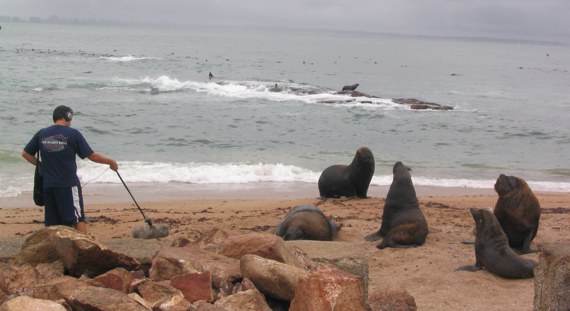
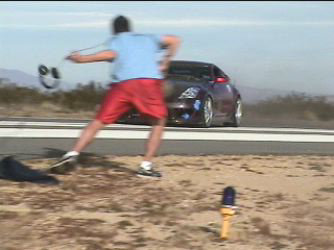
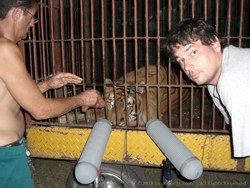
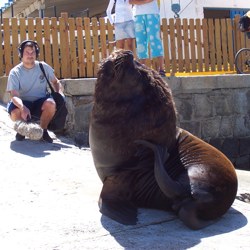
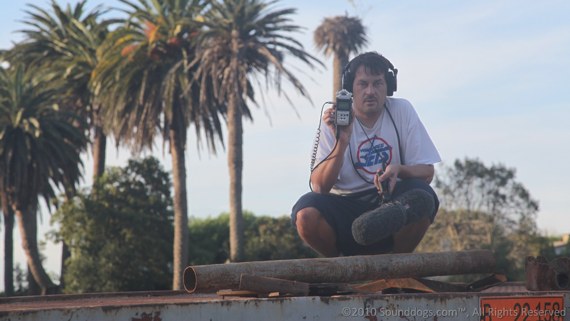
[…] Rob Nokes Special: Exclusive Interview Tell a friend: […]